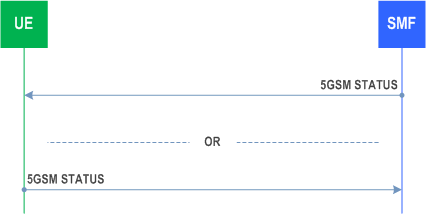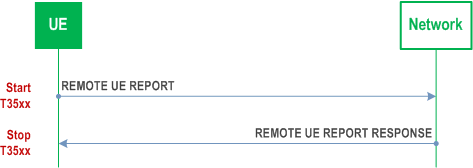Content for TS 24.501 Word version: 19.1.1
1…
3…
4…
4.4…
4.4.3…
4.5…
4.5.3…
4.6…
4.7…
4.9…
4.15…
5…
5.2…
5.3…
5.3.2…
5.3.7…
5.3.19…
5.4…
5.4.1.3…
5.4.2…
5.4.4…
5.4.5…
5.4.6…
5.5…
5.5.1.2.4
5.5.1.2.5…
5.5.1.3…
5.5.1.3.4
5.5.1.3.5…
5.5.2…
5.6…
5.6.2…
6…
6.1.4…
6.2…
6.3…
6.3.2…
6.3.3…
6.4…
6.4.1.4…
6.4.2…
6.5…
7…
8…
8.2.9…
8.3…
9…
9.11.2…
9.11.2.10…
9.11.3…
9.11.3.4…
9.11.3.8…
9.11.3.14…
9.11.3.18C…
9.11.3.29…
9.11.3.33…
9.11.3.39…
9.11.3.45…
9.11.3.50…
9.11.3.53A…
9.11.3.68…
9.11.3.75…
9.11.4…
9.11.4.10…
9.11.4.13…
9.11.4.16…
9.11.4.30…
9.12
10…
A…
B…
C…
D…
D.6…
D.6.3…
D.6.8
D.7…
6.5 5GSM status procedure
6.5.1 General
6.5.2 5GSM status received in the UE
6.5.3 5GSM status received in the SMF
6.6 Miscellaneous procedures
6.6.1 Exchange of extended protocol configuration options
6.6.2 Remote UE report procedure
6.6.2.1 General
6.6.2.2 Remote UE report procedure initiation
6.6.2.3 Remote UE report procedure accepted by the network
6.6.2.4 Abnormal cases in the UE
6.6.2.5 Abnormal cases on the network side
...
...
6.5 5GSM status procedure p. 760
6.5.1 General p. 760
The purpose of the sending of the 5GSM STATUS message is to report at any time certain error conditions detected upon receipt of 5GSM protocol data. The 5GSM STATUS message can be sent by both the network and the UE (see example in Figure 6.5.1.1).

6.5.2 5GSM status received in the UE p. 760
If the 5GSM entity of the UE receives a 5GSM STATUS message the UE shall take different actions depending on the received 5GSM cause value:
#47 PTI mismatch.
On receipt of a 5GSM STATUS message with any other 5GSM cause value no state transition and no specific action shall be taken as seen from the radio interface, i.e. local actions are possible.
The UE shall abort any ongoing 5GSM procedure related to the received PTI value and stop any related timer.
#81 invalid PTI value.
The UE shall abort any ongoing 5GSM procedure related to the received PTI value and stop any related timer.
#97 Message type non-existent or not implemented.
The UE shall abort any ongoing 5GSM procedure related to the PTI or PDU session ID and stop any related timer.
6.5.3 5GSM status received in the SMF p. 760
If the SMF receives a 5GSM STATUS message the SMF shall take different actions depending on the received 5GSM cause value:
#43 invalid PDU session identity.
The local actions to be taken by the SMF on receipt of a 5GSM STATUS message with any other 5GSM cause value are implementation dependent.
The SMF shall abort any ongoing 5GSM procedure related to the PTI or PDU session ID, stop any related timer and locally release the PDU session indicated in the 5GSM STATUS message.
#47 PTI mismatch.
The SMF shall abort any ongoing 5GSM procedure related to the received PTI value and stop any related timer.
If the PTI indicated in the 5GSM STATUS message is related to a PDU SESSION ESTABLISHMENT ACCEPT message, the SMF shall perform a local release of the PDU session indicated in the PDU SESSION ESTABLISHMENT ACCEPT message.
#81 invalid PTI value.
The SMF shall abort any ongoing 5GSM procedure related to the received PTI value and stop any related timer.
#96 invalid mandatory information.
The SMF shall abort any ongoing 5GSM procedure related to the PTI or PDU session ID and stop any related timer.
#97 message type non-existent or not implemented.
The SMF shall abort any ongoing 5GSM procedure related to the PTI or PDU session ID and stop any related timer.
6.6 Miscellaneous procedures p. 761
6.6.1 Exchange of extended protocol configuration options p. 761
The UE and the SMF can exchange protocol configuration options via 5GSM procedures.
The protocol configuration options shall be exchanged via the Extended protocol configuration options IE.
6.6.2 Remote UE report procedure |R17| p. 761
6.6.2.1 General p. 761
The purpose of the 5G ProSe remote UE report procedure is for a UE acting as a 5G ProSe layer-3 UE-to-network relay UE to notify the network that one or more 5G ProSe remote UEs are connected to the 5G ProSe layer-3 UE-to-network relay UE or disconnected from the 5G ProSe layer-3 UE-to-network relay UE as specified in TS 23.304.
The UE does not initiate the remote UE report procedure if the timer T3396 is running.
The UE does not initiate the remote UE report procedure if the timer T3584 is running.
The UE does not initiate the remote UE report procedure if the timer T3585 is running.
6.6.2.2 Remote UE report procedure initiation p. 761
In order to initiate the 5G ProSe remote UE report procedure, the UE shall create a REMOTE UE REPORT message.
The UE shall include information of newly connected or disconnected 5G ProSe remote UEs to the network in the REMOTE UE REPORT message by setting the values of the Remote UE context connected IE or the Remote UE context disconnected IE to the 5G ProSe remote UE identities that are being connected or disconnected, respectively.
The UE shall set the Remote UE ID with:
- the UP-PRUK ID of the 5G ProSe remote UE, if the security for 5G ProSe communication via 5G ProSe UE-to-network relay is performed over user plane as specified in TS 33.503;
- the CP-PRUK ID of the 5G ProSe remote UE, if the security for 5G ProSe communication via 5G ProSe UE-to-network relay is performed over control plane as specified in TS 33.503; or
- the PEI of the 5G ProSe remote UE, if the RSC is specific for emergency services as specified in TS 24.554, and the 5G ProSe remote UE is identified by a PEI.

6.6.2.3 Remote UE report procedure accepted by the network p. 762
Upon receipt of the REMOTE UE REPORT message, the SMF shall send a REMOTE UE REPORT RESPONSE message to the UE. The SMF shall include the PTI from the REMOTE UE REPORT message.
The SMF shall set the EAP message IE to an EAP-success message or an EAP-failure message to be sent to the 5G ProSe layer-3 remote UE if the EAP-success message or the EAP-failure message is received from the DN.
Upon receipt of the REMOTE UE REPORT RESPONSE message, the UE shall stop timer T3586 and enter the state PROCEDURE TRANSACTION INACTIVE.
6.6.2.4 Abnormal cases in the UE p. 762
The following abnormal cases can be identified:
- Expiry of timer T3586: On the first expiry of the timer T3586, the UE shall resend the REMOTE UE REPORT message and shall reset and restart timer T3586. This retransmission is repeated two times, i.e. on the third expiry of timer T3586, the UE shall abort the procedure and release any resources for this procedure.
- Collision of network-requested PDU session release procedure and remote UE report procedure: If the UE receives a PDU SESSION RELEASE COMMAND message during the remote UE report procedure, and the PDU session indicated in the PDU SESSION RELEASE COMMAND message is the PDU session ID that the UE had indicated in the REMOTE UE REPORT message, the UE shall abort the remote UE report procedure and proceed with the network-requested PDU session release procedure.
-
Collision of remote UE report procedure and N1 NAS signalling connection release:
The UE may immediately retransmit the REMOTE UE REPORT message and stop, reset and restart timer T3586, if following conditions apply:
- the original REMOTE UE REPORT was initiated over an existing N1 NAS signalling connection; and
- the previous transmission of the REMOTE UE REPORT message was not initiated due to timer T3586 expiry.
6.6.2.5 Abnormal cases on the network side p. 763
The following abnormal cases have been identified:
- Collision of network-requested PDU session release procedure and remote UE report procedure: If the SMF receives a REMOTE UE REPORT message during a network-requested PDU session release procedure, and the PDU session indicated in the PDU SESSION RELEASE COMMAND message is the PDU session ID that is in the REMOTE UE REPORT message, the SMF shall abort the remote UE report procedure and proceed with the network-requested PDU session release procedure.
- PDU session inactive for the received PDU session identity: If the PDU session ID in the REMOTE UE REPORT message belongs to any PDU session in state PDU SESSION INACTIVE in the SMF, the SMF shall send the 5GSM STATUS message to the UE with the 5GSM cause #43 "Invalid PDU session identity".